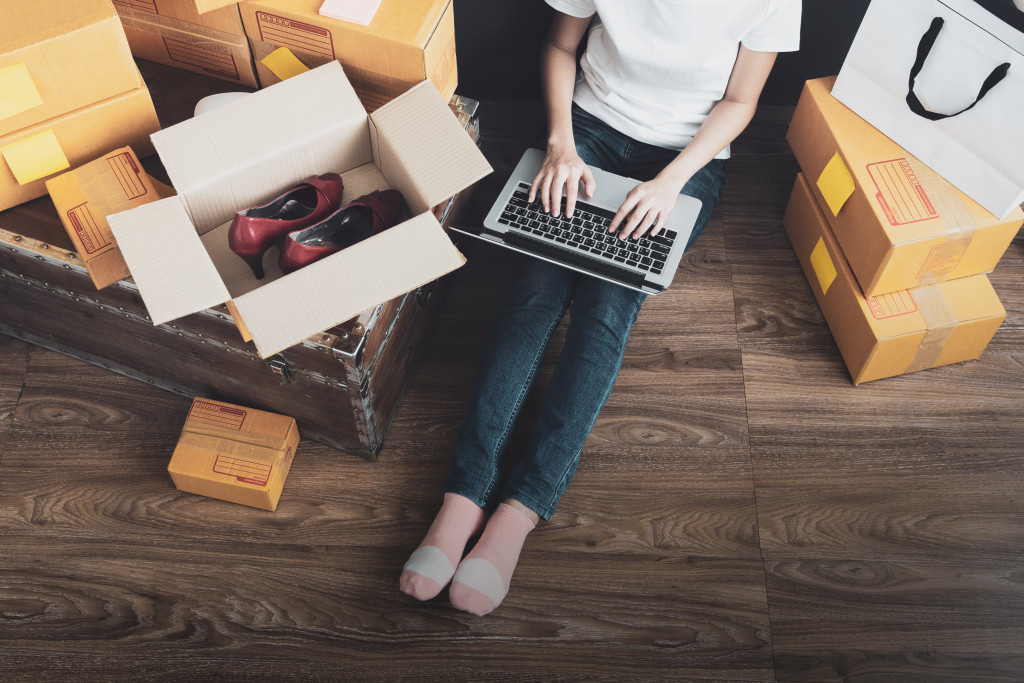When classifying businesses in the retail industry, we instantly categorize them into physical and online stores. But did you know that there is a third key player in the retail sector? That is the click-and-mortar business.
As the name suggests, a click-and-mortar business has both a physical and online store. In recent years, many entrepreneurs have jumped on the eCommerce bandwagon. Even local physical stores have created an online representation of their business. This step has further intensified during the COVID-19 pandemic.
If you’re looking to transition from a brick-and-mortar to a click-and-mortar store, here’s how to do so:
1. Choose a digital platform for your online store
When setting up an online store, you have the option to create your business website, use an eCommerce platform, or take advantage of social media. If you opt to create your own website, have the user experience (UX) in mind. Your site must not only be visually appealing and highly functional; it must also create a great UX for your visitors. Lastly, it must be responsive to different mobile devices, whether smartphones or laptops.
Choosing an eCommerce platform is another viable solution for your online store. However, be highly critical of your selection, whether BigCommerce (for businesses of all sizes), Wix (for small businesses), Squarespace (for startups), or Shopify (for dropshipping). But if you want a free platform for selling, go for social media, whether Facebook, Instagram, or TikTok.
2. Implement local SEO strategies for online visibility
Search engine optimization (SEO) is paramount for every business, whether online or physical store. It’s the process of optimizing a website, writing keyword-integrated content, and building links. Without implementing SEO, your business will have less online visibility and website traffic.
A crucial part of SEO for a click-and-mortar business is local SEO. With this, the goal is to ensure that your target local consumers can find your business online. Be sure to register your local store in Google My Business online by providing your name, address, and phone (NAP) details. Plus, don’t forget to add positive reviews and strive to achieve five-star ratings. With a boost in local SEO, your physical store will get as many customers as possible in your area.

3. Employ PPC advertising to target your local prospects
If it’s difficult to boost your SEO for organic search, implement a pay-per-click (PPC) campaign. Same with SEO, PPC has the goal to increase your online visibility and website traffic. However, the difference is that PPC is a form of paid advertising. While you have the privilege of having your ads displayed, you must pay for every click.
Keep in mind, however, that you have other options for your PPC campaign. One is Facebook advertising that allows you to choose your ad format, target audience, and ad placement. When done correctly, your ads will appear in the newsfeed of your target local prospects. Another option is creating ads and paying for having these ads displayed on other websites for promotion.
4. Harness the power of social media
In this time and age, we can no longer question the power of social media. It is where people stay and spend most of their time, whether on Facebook, Instagram, Twitter, YouTube, or TikTok. There are currently almost 4.5 billion social media users in the world.
What’s great about social media is how these channels become a robust platform for business and marketing. If you’re looking to have a digital presence for your physical store, create a social media page. Through this, you can display your products, perform live online selling, engage with your customers, and even conduct transactions.
5. Be robust in your content and email marketing
If you have already set up an online store for your brick-and-mortar store, it’s time to be aggressive with your marketing strategies. And when it comes to this, content and email marketing can be your best approach.
That said, create relevant and valuable pieces of content and start sending emails to prospective customers. While at it, be sure to post your content pieces on your website and share them on your social media channels. Ultimately, it’s best to work with a digital marketing strategist to help with implementing your content and email marketing campaigns.
Having a click-and-mortar business is no longer an option; it is imperative to have one these days. But when doing so, opt for the right digital platform, employ local SEO, and use PPC advertising. While at it, don’t forget to utilize social media and email marketing. With all these practical steps, you’ll be surprised at how you can seamlessly transition from a brick-and-mortar business to a click-and-mortar store.

